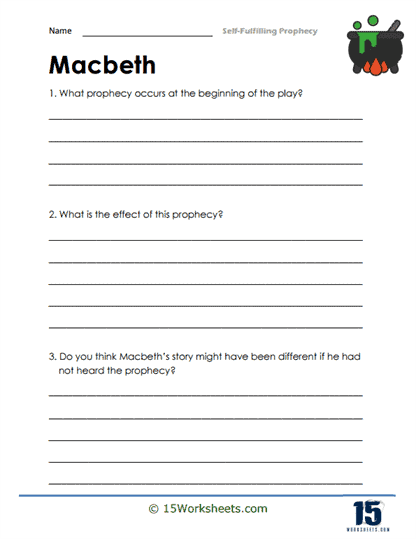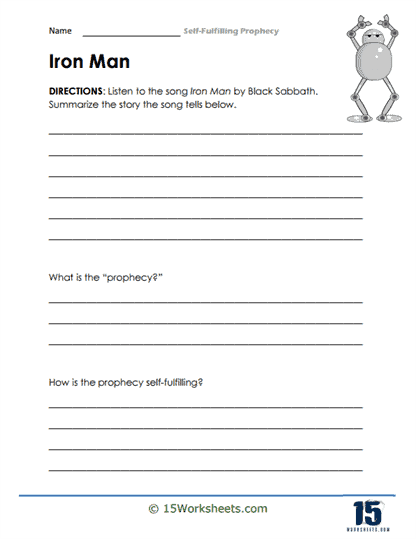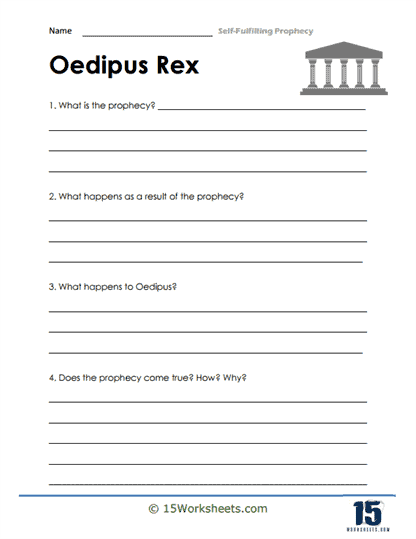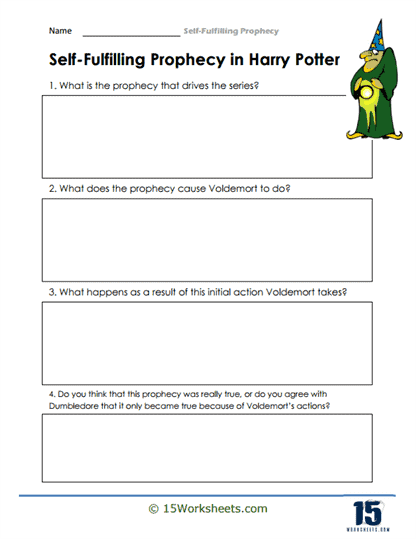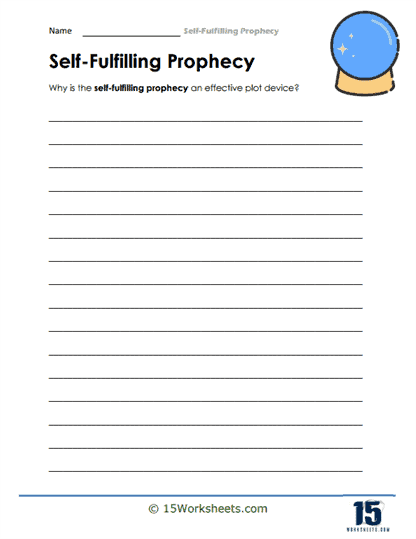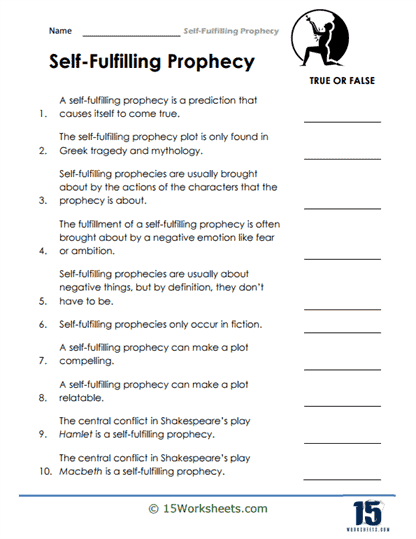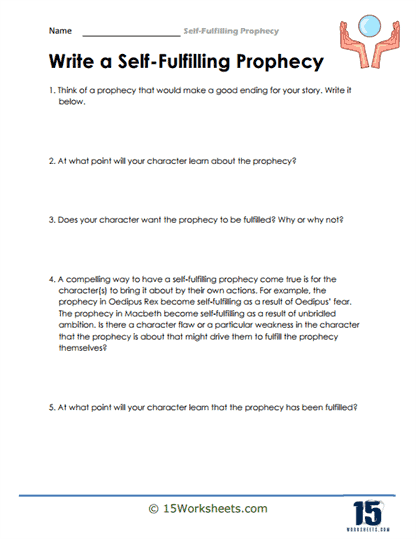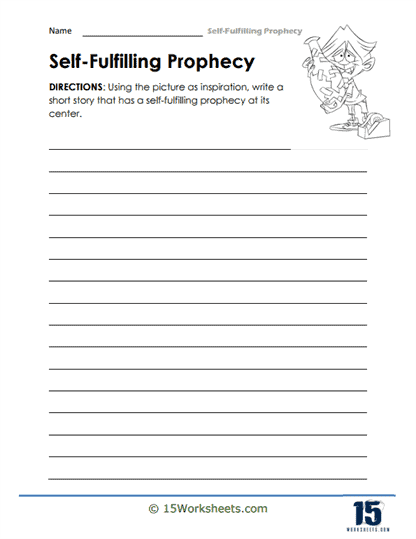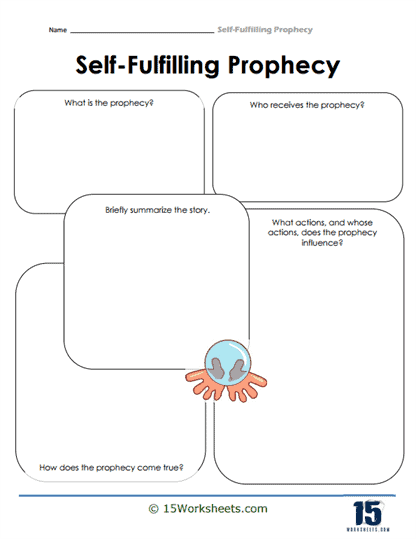Self Fulfill Worksheets
About These 15 Worksheets
These worksheets will help enhance student understanding and application of literary devices in language arts and reading. These worksheets are structured to guide students through various exercises, allowing them to explore and apply literary concepts actively. Through these activities, students gain a deeper appreciation of the nuances in texts, improve their analytical skills, and foster a more profound engagement with literature. This essay will delve into the nature of these worksheets, outline the diverse types of exercises they encompass, and elucidate how they aid in advancing students’ language arts and reading competencies.
By encompassing a variety of exercises that range from identification to creative application, these worksheets cater to different learning styles and developmental stages. The active engagement promoted by these resources not only improves students’ analytical and critical thinking skills but also fosters a deeper appreciation for literature. As students progress through these exercises, they build a robust toolkit of reading and writing skills that will serve them well beyond the classroom. Through the systematic and thoughtful practice these worksheets provide, students emerge as more confident, competent, and creative participants in the world of language arts.
Types of Exercises
Identification and Definition – Exercises begin with the identification and definition of literary devices. Students might match terms with their definitions or identify examples from a provided list of quotations or excerpts. This foundational activity ensures students can recognize and understand the basic elements of literary analysis.
Contextual Analysis – Following identification, students analyze literary devices within specific contexts. They might be asked to read passages and then explain how a particular device enhances the theme, sets the tone, or develops characters. This exercise deepens comprehension by linking devices to their functional roles in literature.
Comparison and Contrast – Worksheets may include exercises that ask students to compare and contrast the use of literary devices across different texts or authors. This not only reinforces identification skills but also encourages critical thinking about why certain devices are chosen and how they contribute to the distinct voice or style of a text.
Creative Application – Encouraging creativity, some worksheets prompt students to use literary devices in their own writing. For example, they might write a short paragraph employing metaphor or personification. This activity bridges the gap between analysis and production, allowing students to appreciate the craft of writing from an author’s perspective.
Critical Reflection – Exercises often culminate in critical reflection questions. These might ask students to consider the effectiveness of a device in conveying a theme or emotion, or to reflect on how their understanding of a text has changed through the analysis of its literary devices. This fosters metacognitive skills, enabling students to think about their thinking and learning process.
The Benefits of These Worksheets
Practicing with self-fulfilling literary device worksheets enhances students’ language arts and reading skills in several key ways:
Enhanced Comprehension – By systematically breaking down how literary devices function within texts, students develop a nuanced understanding of texts. This analytical approach to reading cultivates deeper comprehension, enabling students to grasp complex themes and narratives more effectively.
Critical Thinking and Analysis – The exercises encourage students to not just identify devices, but also to consider their significance and impact. This practice sharpens critical thinking and analytical skills, as students learn to evaluate and interpret literary works beyond their surface meaning.
Vocabulary Expansion – Engaging with a wide array of literary devices naturally expands students’ literary vocabulary. This enriched vocabulary facilitates more precise and sophisticated discussions and writings about literature.
Creative Writing Skills – Exercises that encourage the creative application of literary devices allow students to experiment with and understand the craft of writing. This hands-on approach can inspire greater creativity and innovation in students’ own writing projects.
Appreciation of Literature – Through detailed exploration of literary devices, students gain a greater appreciation for the artistry behind literature. Recognizing the skillful use of language and technique enhances students’ enjoyment and valuation of literary works.
Improved Reading Fluency – Regular practice with these worksheets can also improve reading fluency. As students become more familiar with literary devices and their cues within texts, they can navigate and understand complex literature with greater ease.
What is the Literary Device of Self-Fulfillment?
The literary device of self-fulfillment, often conflated with the concept of a self-fulfilling prophecy, plays a significant role in literature, weaving complexity and depth into narratives. This device revolves around the idea that a belief or expectation, whether positive or negative, can bring about its own realization. In the realm of literature, authors use self-fulfillment to explore themes of fate, destiny, human psychology, and the power of belief. It serves as a tool to delve into character development, plot progression, and thematic exploration, providing a rich ground for analysis and interpretation.
Defining Features of Self-Fulfillment
The main defining feature of self-fulfillment in literature is the actualization of a character’s belief or expectation into reality, driven by the individual’s actions or mindset. Unlike external forces dictating outcomes, self-fulfillment underscores the power of internal convictions in shaping one’s fate. It highlights the psychological and existential underpinnings of human behavior, suggesting that our perceptions and beliefs can significantly influence our reality.
Characteristics of Self-Fulfillment
Psychological Depth – Self-fulfillment adds layers of psychological complexity to characters, showcasing how their inner fears, desires, or beliefs shape their actions and, consequently, their outcomes.
Narrative Tension – The anticipation of whether a character’s belief will manifest creates suspense and tension, driving the narrative forward and keeping readers engaged.
Thematic Exploration – This device allows authors to explore themes such as destiny versus free will, the power of belief, and the impact of perspective on reality.
Character Development – Characters undergoing a self-fulfilling journey often experience significant development, learning from the outcomes of their beliefs and actions.
Causality and Consequence – Self-fulfillment emphasizes the causal relationship between belief and outcome, offering a nuanced exploration of cause and effect in human lives.
Examples of Self-Fulfillment in Literature
“Macbeth” by William Shakespeare
In “Macbeth,” the witches’ prophecy that Macbeth will become king is a classic example of self-fulfillment. Believing in the prophecy, Macbeth takes drastic actions to ensure its realization, including murder. His belief in the prophecy and subsequent actions set him on a path that ultimately leads to his downfall. Shakespeare uses self-fulfillment to explore themes of ambition, guilt, and the self-destructive nature of seeking power at any cost.
“Oedipus Rex” by Sophocles
“Oedipus Rex” epitomizes the tragic consequences of a self-fulfilling prophecy. Oedipus’s attempt to avoid the prophecy—that he would kill his father and marry his mother—ironically leads him directly into its fulfillment. Sophocles delves into the themes of fate, free will, and the limits of human understanding, showing how Oedipus’s actions, driven by his determination to escape his fate, seal his tragic destiny.
“The Alchemist” by Paulo Coelho
Paulo Coelho’s “The Alchemist” offers a more positive perspective on self-fulfillment. The protagonist, Santiago, believes in his personal legend (destiny) of finding treasure in the Egyptian pyramids. His unwavering belief in this destiny and his actions in pursuit of it ultimately lead him to discover his treasure, but not in the way he initially expects. “The Alchemist” uses self-fulfillment to explore themes of personal growth, destiny, and the significance of the journey over the destination.
The Effect of Self-Fulfillment on the Reader
The use of self-fulfillment in literature has a profound effect on readers, engaging them on multiple levels:
Reflective Insight – Self-fulfillment prompts readers to reflect on their beliefs and the extent to which these beliefs shape their realities. It encourages introspection about destiny, free will, and the power of mindset.
Emotional Engagement – Witnessing characters navigate the consequences of their beliefs fosters emotional investment, as readers sympathize with characters’ struggles and root for their success or lament their downfall.
Intellectual Stimulation – The thematic exploration facilitated by self-fulfillment challenges readers intellectually, prompting them to consider complex philosophical questions about human existence and the nature of reality.
Narrative Engagement – The suspense and tension generated by the anticipation of self-fulfillment outcomes keep readers engaged, compelling them to see how characters’ beliefs and actions unfold within the story.

